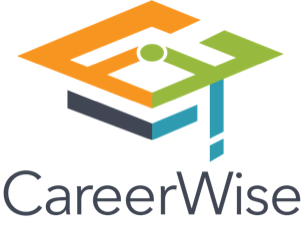
Expand the number of youth apprenticeships offered in Colorado by increasing tech employer adoption and championing employer success
Narrative
LandscapeMapping the Narrative Landscape
CareerWise audited the messaging of tech companies of different sizes with a Colorado presence. What they suspected was true: businesses look at youth apprenticeships as distinctly philanthropic, not as beneficial for business and the economy.
CareerWise audited the messaging of tech companies of different sizes with a Colorado presence. What they suspected was true: businesses look at youth apprenticeships as distinctly philanthropic, not as beneficial for business and the economy.
Employers
MindsetUnderstanding Audience Mindset
Interviewing Colorado tech leaders working in DEI, HR, and operations, CareerWise discovered vastly different understandings of “apprenticeship.” While audiences did feel the opportunity should be wider-reaching, they associated it with hard skills, not critical thinking or networking.
Interviewing Colorado tech leaders working in DEI, HR, and operations, CareerWise discovered vastly different understandings of “apprenticeship.” While audiences did feel the opportunity should be wider-reaching, they associated it with hard skills, not critical thinking or networking.
PersuasionTesting Persuasive Messages
CareerWise tested messaging with C-suite and HR leaders. Audiences responded well to acknowledgments that the tech sector is not equitable, and that apprenticeships can benefit businesses and empower youth to make their own decisions.
CareerWise tested messaging with C-suite and HR leaders. Audiences responded well to acknowledgments that the tech sector is not equitable, and that apprenticeships can benefit businesses and empower youth to make their own decisions.
ActionPutting Messaging Into Action
CareerWise will put their messaging into action following the conclusion of the Pathways Narrative Project.
CareerWise will put their messaging into action following the conclusion of the Pathways Narrative Project.
Creating
ChangeCreating Change
CareerWise Colorado came away with a set of content to test in its communications, moving forward: connecting apprenticeships to audience beliefs, values, emotions, and identities, and sharing its insights with the broader field.
CareerWise Colorado came away with a set of content to test in its communications, moving forward: connecting apprenticeships to audience beliefs, values, emotions, and identities, and sharing its insights with the broader field.
Creating ChangeCreating Change
CareerWise Colorado came away with a set of content to test in its communications, moving forward: connecting apprenticeships to audience beliefs, values, emotions, and identities, and sharing its insights with the broader field.
CareerWise Colorado came away with a set of content to test in its communications, moving forward: connecting apprenticeships to audience beliefs, values, emotions, and identities, and sharing its insights with the broader field.
Mindset

What is the audience's mindset?
Insights
- Awareness of the exclusive nature of tech sector and the importance of access
- College is consistently thought to provide a necessary bridge between high school and career in which key durable skills are learned
- No universal understanding of the 'apprenticeship' experience
- Worry that high school students and recent graduates are immature
- Feel smaller companies lack the capacity to manage an apprenticeship program
- Some believe training programs have strategic value
For Example:
College is consistently thought to provide a necessary bridge between high school and career in which key durable skills are learned
For Example:
Some believe training programs have strategic value
Persuasion

What messages are most persuasive to the target audience?
Narrative Framework
Connection
More and more tech companies are recognizing the connection between business success and equity and inclusion. To be competitive, companies must demonstrate positive impacts to their bottom line and also to their communities.
More and more tech companies are recognizing the connection between business success and equity and inclusion. To be competitive, companies must demonstrate positive impacts to their bottom line and also to their communities.
Education and good jobs are critical to a thriving economy. In the tech sector, we are competing for the talent of the future and looking for innovative ways to build a sustainable early talent pipeline. Technology evolves rapidly and our success requires us to continue to innovate in how we think, what we produce, and how and where we find new talent.
Education and good jobs are critical to a thriving economy. In the tech sector, we are competing for the talent of the future and looking for innovative ways to build a sustainable early talent pipeline. Technology evolves rapidly and our success requires us to continue to innovate in how we think, what we produce, and how and where we find new talent.
Problem
Yet young people, especially young people of color face significant barriers to enter the tech workforce.
Too often we limit our search to people and communities who already have strong professional networks and relationships or we spend a lot of resources to recruit a diverse applicant pool. Yet young people, especially young people of color face significant experience barriers to enter entering the tech workforce. Many positions- even at the entry level- require that applicants have already had some amount of work experience or a college degree, even though many of the skills needed are best learned on the job.
Too often we limit our search to people and communities who already have strong professional networks and relationships or we spend a lot of resources to recruit a diverse applicant pool. Young people, the most racially diverse generation in history, experience barriers to entering the tech workforce. Many positions- even at the entry level- require that applicants have already had some amount of work experience or a college degree, even though many of the skills needed are best learned on the job.
Solution
Apprenticeships address these barriers by combining classroom learning with on-the-job training to give young people the edge they need to complete in the sector.
Apprenticeships are a win-win for young people and employers. Apprenticeships address these barriers by combining classroom learning with on-the-job training to give young people the edge they need to complete in the sector combine academic coursework with real world learning. Young people gain meaningful work experience, grow their networks, and begin their professional lives with a foot in the door, and a way to set themselves apart. Through apprenticeships, employers cultivate talent in the communities in which they operate, foster loyalty among future employees, and increase the diversity of its workforce.
All while reducing the costs traditionally associated with recruitment, retention, and even outsourcing for entry level positions.
Apprenticeships are a win-win for young people and employers.
Apprenticeships combine academic coursework with real world learning.
Young people gain meaningful work experience, grow their networks, and begin their professional lives with a foot in the door, and a way to set themselves apart.
Through apprenticeships, employers cultivate talent in the communities in which they operate, foster loyalty among future employees, and increase the diversity of its workforce.
All while reducing the costs traditionally associated with recruitment, retention, and even outsourcing for entry level positions.
Vision
Through programs like apprenticeships, companies can cultivate potential employers, expand and strengthen the workforce for the sector, and ensure greater economic opportunity and mobility for young people.
Apprenticeships are one part of a sustainable early talent pipeline. When our sector identifies talent early, we can recruit the workforce that we need when we need it. When our sector identifies talent early, we can recruit the workforce that we need when we need it. Through programs like apprenticeships, companies the tech sector can cultivate potential employers future employees, expand and strengthen the workforce for the sector, and ensure greater economic opportunity and mobility for young people tech workforce, and provide the jobs necessary to ensure a thriving economy for all.
Apprenticeships are one part of a sustainable early talent pipeline.
When our sector identifies talent early, we can recruit the workforce that we need when we need it. Apprenticeship doesn’t just help get talent in the door but helps to foster relationships and experiences necessary to create the next big innovation. Through programs like apprenticeships, the tech sector can cultivate future employees, expand and strengthen the tech workforce, and provide the jobs necessary to ensure a thriving economy for all.
Insights
- Audiences believe the tech sector is based on relationships
- Audiences value agency
- Remote work has transformed the tech sector
- Apprenticeships can work in tech
- Audiences hold an incomplete and sometimes outdated understanding of apprenticeship
For Example:
Audiences believe the tech sector is based on relationships
For Example:
Audiences hold an incomplete and sometimes outdated understanding of apprenticeship
Action

